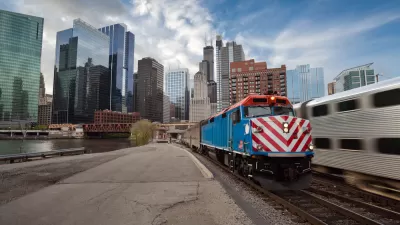The two trains were traveling on a single track in Bavaria, each going around a bend at about 62 mph so they were not visible to the engineers. The trains were equipped with automatic braking systems reported to have been deactivated.
"Media reports said human error was to blame for the high-speed crash near the southern spa town of Bad Aibling, where one of the trains sliced into the other, ripping a hole in its side," writes Ralf Isermann for Agence France‑Presse (AFP). They crashed at 7 am on Feb. 9.
One media source "said a signalling station worker had manually disactivated [sic] the automatic signalling system to let the first train -- which was running late -- go past." Another source "said manually disabling the signalling would have disactivated the automatic braking systems."
After German rail was liberalised at the end of the 1990s, BOB became one of the train operators competing with state-run Deutsche Bahn.
Although it has lost its monopoly operating status, Deutsche Bahn still owns the rail network.
More will be known about the cause, whether human error or a technical malfunction is to blame, after the trains' black boxes have been analyzed. Two of the three have been recovered. Both engineers and two conductors were among the fatalities.
Police chief for the Upper Bavaria region, Robert Kopp, said the trains were carrying about 150 passengers, fewer than on a regular work day as many people were off for the region's winter holidays.
The crash "rais(es) new questions about the safety and reliability of a rail network in Europe that has been the envy of much of the world," writes Melissa Eddy for The New York Times. But "crashes across Europe in recent years have highlighted weaknesses in the rail network."
Many countries in the region have abandoned government-run monopolies in favor of privately-run rail systems, even as the European Union is spending billions of euros to modernize rail networks.
The result is an increasingly precarious system, with a patchwork of old and new technologies in use at the same time, and with drivers, who are often alone in cars, shouldering more responsibility for safety.
In Germany, the most serious accident since unification was in 1998, when 101 people died in the northern town of Eschede after a high-speed train derailed, crashing into a bridge. Fatal crashes since then have been rare and on a much smaller scale.
"The accident is believed to be Germany's first fatal train crash since April 2012, when three people were killed and 13 injured in a collision between two regional trains in the western city of Offenbach," writes AFP's Ralf.
In the United States, the National Transportation Safety Board (NTSB) is still investigating the cause of the May 10, 2015 Amtrak Northeast Regional train derailment in Philadelphia that killed eight passengers.
FULL STORY: Ten dead as commuter trains collide in Germany

Maui's Vacation Rental Debate Turns Ugly
Verbal attacks, misinformation campaigns and fistfights plague a high-stakes debate to convert thousands of vacation rentals into long-term housing.

Planetizen Federal Action Tracker
A weekly monitor of how Trump’s orders and actions are impacting planners and planning in America.

San Francisco Suspends Traffic Calming Amidst Record Deaths
Citing “a challenging fiscal landscape,” the city will cease the program on the heels of 42 traffic deaths, including 24 pedestrians.

Defunct Pittsburgh Power Plant to Become Residential Tower
A decommissioned steam heat plant will be redeveloped into almost 100 affordable housing units.

Trump Prompts Restructuring of Transportation Research Board in “Unprecedented Overreach”
The TRB has eliminated more than half of its committees including those focused on climate, equity, and cities.

Amtrak Rolls Out New Orleans to Alabama “Mardi Gras” Train
The new service will operate morning and evening departures between Mobile and New Orleans.
Urban Design for Planners 1: Software Tools
This six-course series explores essential urban design concepts using open source software and equips planners with the tools they need to participate fully in the urban design process.
Planning for Universal Design
Learn the tools for implementing Universal Design in planning regulations.
Heyer Gruel & Associates PA
JM Goldson LLC
Custer County Colorado
City of Camden Redevelopment Agency
City of Astoria
Transportation Research & Education Center (TREC) at Portland State University
Jefferson Parish Government
Camden Redevelopment Agency
City of Claremont



























